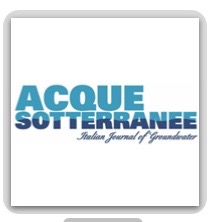The hydrogeological well database TANGRAM©: a tool for data processing to support groundwater assessment
All claims expressed in this article are solely those of the authors and do not necessarily represent those of their affiliated organizations, or those of the publisher, the editors and the reviewers. Any product that may be evaluated in this article or claim that may be made by its manufacturer is not guaranteed or endorsed by the publisher.
Authors
At the Department of Earth and Environmental Sciences of the University of Milano-Bicocca (DISAT-UNIMIB), a hydrogeological well database, called TANGRAM©, has been developed and published on line at www.tangram.samit.unimib.it, developing an earlier 1989 DOS version. This package can be used to store, display, and process all data related to water wells, including administrative information, well characteristics, stratigraphic logs, water levels, pumping rates, and other hydrogeological information. Currently, the database contains more than 39.200 wells located in the Italian region of Lombardy (90%), Piedmont (9%) and Valle d'Aosta (1%). TANGRAM© has been created both as a tool for researches and for public administration's administrators who have projects in common with DISAT-UNIMIB. Indeed, transferring wells data from paper into TANGRAM© offers both an easier and more robust way to correlate hydrogeological data and a more organized management of the administrative information. Some Administrations use TANGRAM© regularly as a tool for wells data management (Brescia Province, ARPA Valle Aosta). An innovative aspect of the database is the quantitative extraction of stratigraphic data. In the part of the software intended for research purposes, all well logs are translated into 8-digit alphanumeric codes and the user composes the code interpreting the description at each stratigraphic level. So the stratigraphic well data can be coded, then quantified and processed. This is made possible by attributing a weight to the digits of the code for textures. The program calculates the weighted percentage of the chosen lithology, as related to each individual layer. These extractions are the starting point for subsequent hydrogeological studies: well head protection area, reconstruction of the dynamics of flow, realization of the quarry plans and flux and transport hydrogeological models. The results of a two-dimensional distribution of coarse, medium and fine sized material in the first 80 meters of depth are presented here for a study area located within the Province of Brescia (Italy).
How to Cite

This work is licensed under a Creative Commons Attribution-NonCommercial 4.0 International License.
PAGEPress has chosen to apply the Creative Commons Attribution NonCommercial 4.0 International License (CC BY-NC 4.0) to all manuscripts to be published.












